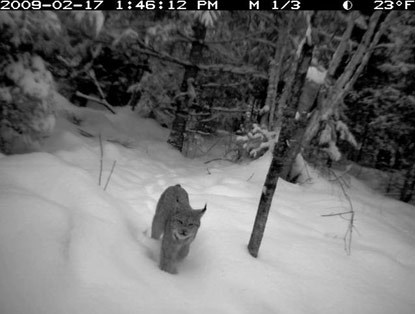
NPS Ron Moen, PhD, Natural Resources Research Institute Steve Windels, PhD, Voyageurs National Park Voyageurs National Park (VOYA) is within historical distribution limits of Canada lynx (Lynx canadensis). Records of lynx exist for the area in and near VOYA since the 1970s, and recent sightings have been confirmed with DNA analysis. We initiated this project to determine habitat suitability for lynx in VOYA, and if possible to deploy radiocollars on lynx in VOYA. The lynx radiotelemetry project on the Superior National Forest provided data on home range size, density, cover type use, and prey density to which VOYA could be compared. We used remote cameras and snow-tracking to search for lynx in and near VOYA in 2007 and 2008. We estimated density of the lynx’s primary prey, snowshoe hare (Lepus americanus) with hare pellet counts, extrapolated hare density to the landscape level, and contrasted VOYA with lynx home ranges from the Superior National Forestradiotelemetry project. Remote cameras and track searches did not provide evidence to suggest there were resident lynx in VOYA. |
Last updated: April 10, 2015
